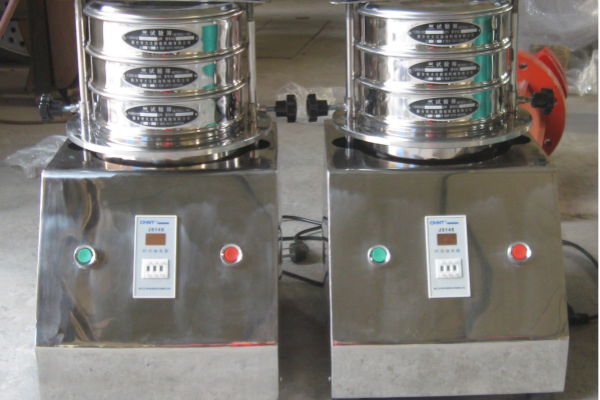
Stainless Steel Analysis Sieve
Stainless Steel Analysis Sieve is priced at $20.00 and $850.00 per set.There are various models available, usually classified by mesh type (such as woven mesh, perforated mesh) and mesh size (for example 20-200 mesh, 200-1000 mesh).
Diameter:500/400/300/200/120/80/75mm
Mesh type: Woven Wire Mesh/Perforated Plate/Electroforming Mesh
Capacity: 100-3000kg/h
Aperture sizes: 0.02-2.36mm
Material:Stainless steel 304,316L,or Brass
Hole shapeSquare/Round
What is Stainless Steel Analysis Sieve?
The Stainless Steel Analysis Sieve is a precision screening equipment designed for particle size analysis and classification of powdery, granular, and fibrous materials. It leverages high-grade stainless steel (such as 304 or 316L) for its corrosion resistance, durability, and hygienic properties, making it ideal for applications requiring high purity and resistance to chemical erosion. Unlike traditional sieves, it integrates mechanical vibration systems with modular stainless steel structures to achieve accurate particle size separation, widely used in laboratories, quality control, and industrial production for materials ranging from 10μm to 5mm.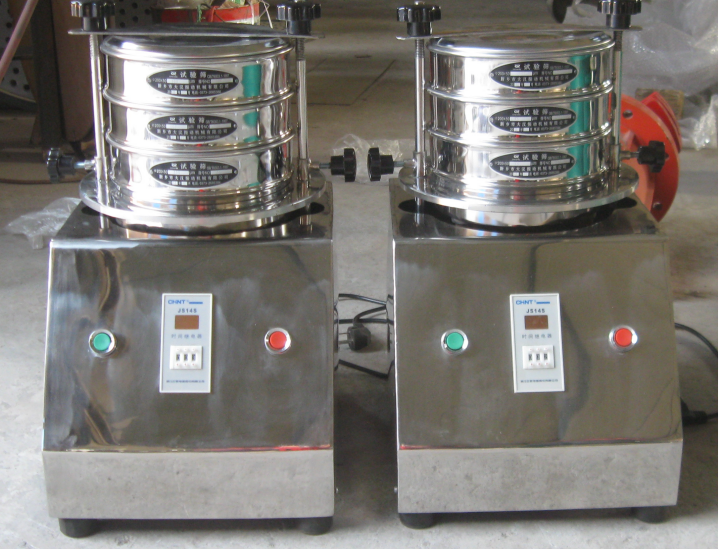
How to choose the mesh type of stainless steel analysis screen?
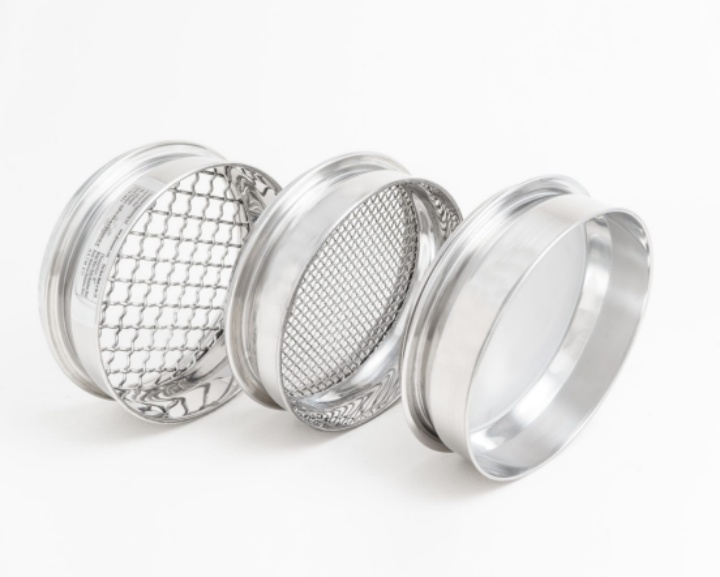
The selection of mesh types (woven, perforated, round hole, square hole) depends on material properties and screening goals:
Woven Mesh: Made of interlaced stainless steel wires, it offers precise aperture control (10μm-1mm) for fine particles. Ideal for powdery materials like pharmaceutical APIs (≤50μm) and food additives, ensuring high accuracy in particle size analysis.
Perforated Mesh: Created by punching holes in stainless steel sheets, it suits coarse materials (>1mm) such as ores and granules. Its robust structure withstands abrasion, making it suitable for metallurgical or mineral analysis.
Round Holes: Smooth-edged round apertures minimize material adhesion, perfect for sticky substances (e.g., wet powders) or spherical particles. They reduce clogging and ensure consistent flow in chemical or cosmetic ingredient screening.
Square Holes: With straight edges and larger open areas, they enhance throughput for angular particles (e.g., fibrous materials or crushed minerals). Ideal for high-volume analysis in construction material testing.
What are the Core Advantages of Stainless Steel Analysis Sieve?
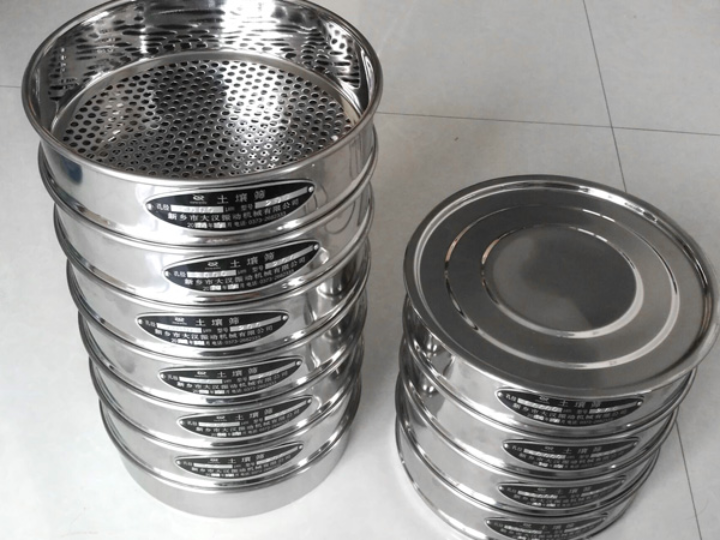
The technology excels in durability, precision, and adaptability for diverse screening needs Superior Material Compatibility,High Precision & Efficiency and Low Maintenance & Longevity.
Superior Material Compatibility:316L stainless steel ensures resistance to acids, alkalis, and high-temperature environments (up to 300°C), outperforming carbon steel sieves in corrosive applications. Its hygienic design meets FDA and pharmaceutical standards, making it suitable for food, pharmaceuticals, and high-purity chemicals.
High Precision & Efficiency:Compared to traditional manual sieves, the stainless steel analysis sieve improves screening efficiency by 80% for particles ≤100μm, with a classification accuracy of ±2%. Ultrasonic-assisted models reduce mesh blinding by 90%, even for materials with moisture content ≤5%.
Low Maintenance & Longevity:The stainless steel construction minimizes wear and tear, with a service life of ≥5 years under normal use. Quick-release frames and detachable components enable easy maintenance, reducing downtime by 60%.
What is the Working Principle of Stainless Steel Analysis Sieve?
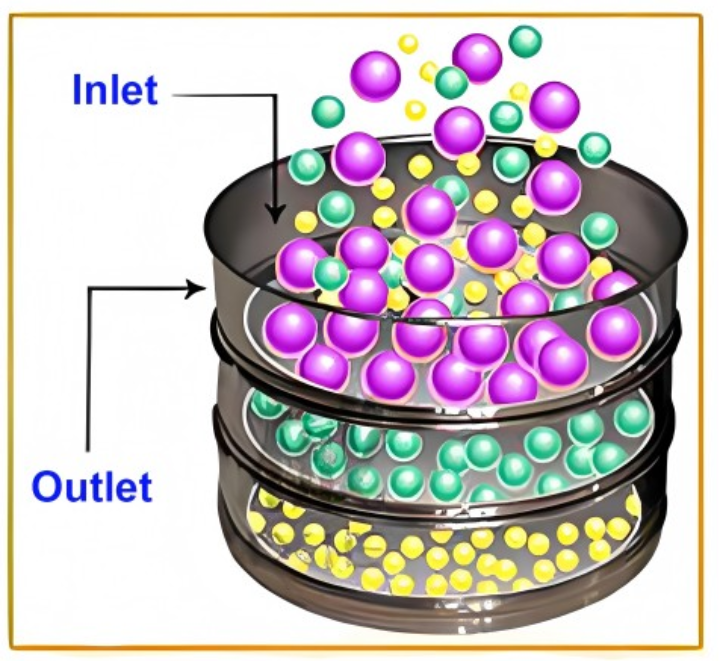
The sieve integrates mechanical vibration with stainless steel structural advantages to achieve precise particle separation.
Vibration-Driven Screening:The vibration motor induces horizontal and vertical oscillations, causing materials to move in a spiral pattern across the sieve surface. Smaller particles pass through the mesh, while larger ones are retained and discharged from the upper layers.
Particle Size Classification Mechanism:Materials enter the top sieve and are distributed evenly by the vibration. Particles smaller than the mesh aperture fall through to the next layer, while oversize particles are transported to the outlet. This process repeats until final grading.
Anti-Blinding & Self-Cleaning:For sticky materials, optional ultrasonic waves or rubber balls attached to the undersurface of the sieve prevent mesh clogging. The stainless steel’s smooth surface further reduces particle adhesion.
Intelligent Control (Advanced Models):PLC-based controllers enable real-time monitoring of vibration parameters (frequency, amplitude) and screening time, generating particle size distribution reports with an error margin ≤1%.
Parameter
| PART NO. | DESCRIPTION | DIAMETER MM | HEIGHT MM | MATERIAL |
| 8700S-01 | Test Sieve 4mm aperture | 200 | 50 | Stainless Steel |
| 8700S-02 | Test Sieve 2mm aperture | 200 | 50 | Stainless Steel |
| 8700S-03 | Test Sieve 1mm aperture | 200 | 50 | Stainless Steel |
| 8700S-04 | Test Sieve 850 microns aperture | 200 | 50 | Stainless Steel |
| 8700S-05 | Test Sieve 710 microns aperture | 200 | 50 | Stainless Steel |
| 8700S-06 | Test Sieve 600 microns aperture | 200 | 50 | Stainless Steel |
| 8700S-07 | Test Sieve 500 microns aperture | 200 | 50 | Stainless Steel |
| 8700S-08 | Test Sieve 425 microns aperture | 200 | 50 | Stainless Steel |
| 8700S-09 | Test Sieve 300 microns aperture | 200 | 50 | Stainless Steel |
| 8700S-10 | Test Sieve 250 microns aperture | 200 | 50 | Stainless Steel |
| 8700S-11 | Test Sieve 180 microns aperture | 200 | 50 | Stainless Steel |
| 8700S-12 | Test Sieve 150 microns aperture | 200 | 50 | Stainless Steel |
| 8700S-13 | Test Sieve 125 microns aperture | 200 | 50 | Stainless Steel |
| 8700S-14 | Test Sieve 106 microns aperture | 200 | 50 | Stainless Steel |
| 8700S-15 | Test Sieve 90 microns aperture | 200 | 50 | Stainless Steel |
| 8700S-16 | Test Sieve 75 microns aperture | 200 | 50 | Stainless Steel |
| 8700S-17 | Test Sieve 53 microns aperture | 200 | 50 | Stainless Steel |
| 8700S-18 | Test Sieve 32 microns aperture | 200 | 50 | Stainless Steel |
| 8700S-19 | Test Sieve 25 microns aperture | 200 | 50 | Stainless Steel |
| 8700S-20 | Test Sieve 20 microns aperture | 200 | 50 | Stainless Steel |
What is the Structure of Stainless Steel Analysis Sieve?
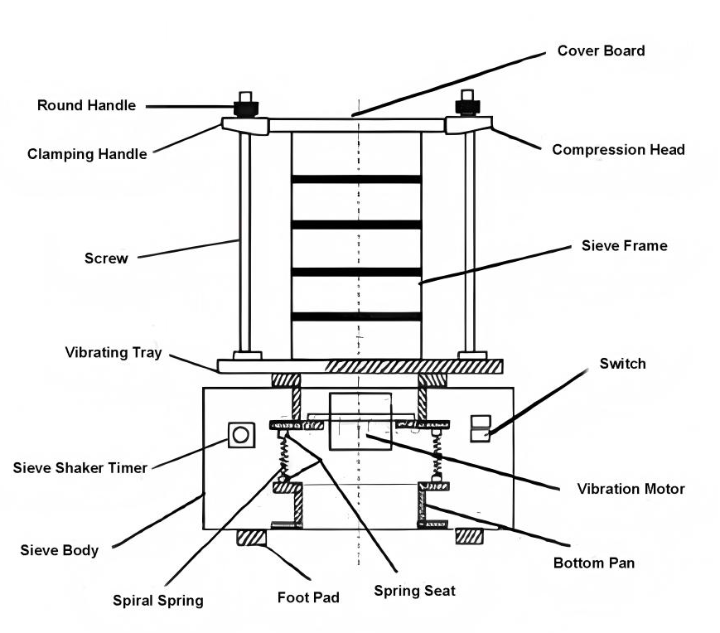
The structure combines stainless steel modularity , vibration technology for reliable and precise screening.
Multi-Layer Stainless Steel Sieve Frames:1-10 stackable frames with graded mesh sizes (20-2000 mesh/850μm-7μm) support multi-level classification. Coarse layers (20-200 mesh) use 304 stainless steel for robust materials like ores, while fine layers (200-2000 mesh) employ 316L stainless steel for corrosive or food-grade applications. Precision-welded rims prevent leakage, and interchangeable mesh plates allow for quick specification changes.Vibration Drive System:An eccentric vibration motor generates 3D circular vibrations (100-300Hz frequency, 0.5-2mm amplitude) to ensure uniform screening and efficient material flow. For high-adhesion materials, optional ultrasonic transducers (30-40kHz) can be integrated to prevent mesh blinding.
Hygienic & Corrosion-Resistant Design:The mirror-polished stainless steel surfaces (Ra≤0.8μm) meet GMP standards by minimizing particle adhesion and simplifying cleaning. Sealed rubber gaskets between frames prevent dust emissions, making the sieve suitable for handling hazardous or fine powders.
Modular & Adjustable Features:Quick-clamp mechanisms enable rapid frame assembly and disassembly within 5 minutes. Adjustable vibration angles and speeds optimize screening efficiency for varying material viscosities, with the capacity to process 100g-5kg samples per batch.
Where is Stainless Steel Analysis Sieve Applied?
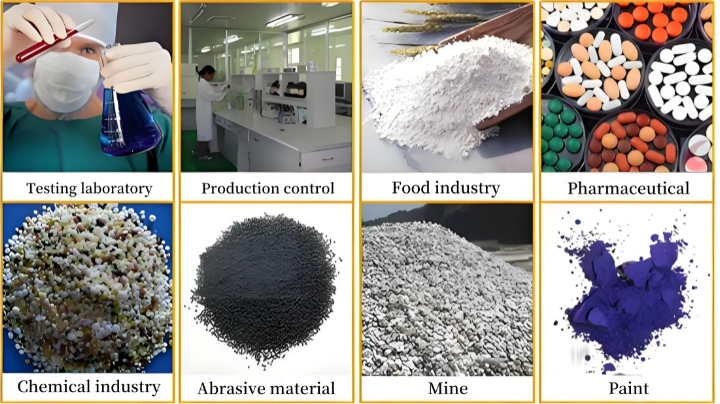
With its corrosion resistance and precision screening, the stainless steel analysis sieve is essential for quality control and production across industries.
Pharmaceuticals: Screening of API powders, such as ibuprofen particles ≤50μm, and excipients like lactose ≤100μm, is crucial to ensure uniform particle size, which in turn affects tablet dissolution and stability.
Food & Beverage: In the food and beverage industry, stainless steel analysis screens are used for grading flour (100-200 mesh) for baking, sugar crystals, and spice powders, helping maintain texture and flowability. They also enable the separation of food additives such as cocoa powder and starch to meet strict hygiene standards.
Chemicals & Petrochemicals: For the chemicals and petrochemicals sector, these screens are essential for catalyst screening, including zeolites and activated carbon, in petroleum refining and chemical synthesis processes. They also facilitate the classification of pigments and fillers like titanium dioxide and calcium carbonate used in coatings and plastics.
Metallurgy & Minerals: In metallurgy and minerals, stainless steel analysis screens are employed for the analysis of metal powders, including aluminum and stainless steel, which are vital for additive manufacturing and powder metallurgy. Additionally, they assist in the size grading of ores and minerals, optimizing smelting and processing efficiency.
Laboratory & Research: In laboratory and research settings, these screens are used for particle size analysis in academic research involving nanomaterials and ceramics, as well as in QC laboratories. They play a significant role in supporting R&D efforts for the development of new materials.
As a cornerstone of particle size analysis, the Stainless Steel Analysis Sieve balances durability with precision, bridging laboratory research and industrial production. Its stainless steel architecture not only ensures reliability in harsh environments but also meets the strict hygiene requirements of critical industries. In the future, with the integration of IoT connectivity and AI-driven parameter optimization, this technology will evolve into a smart screening solution, further enhancing automation and data-driven quality control for particulate materials.
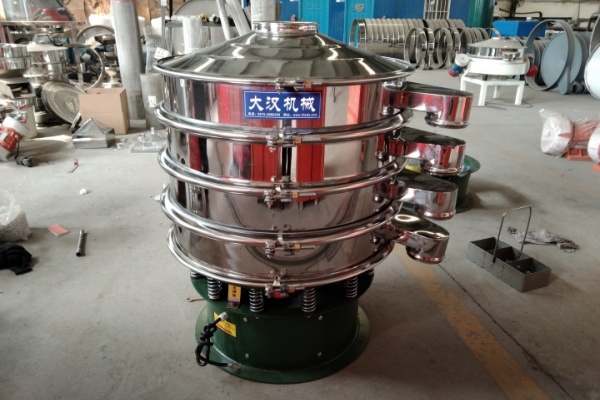 Powder Sieve Machine
Powder Sieve Machine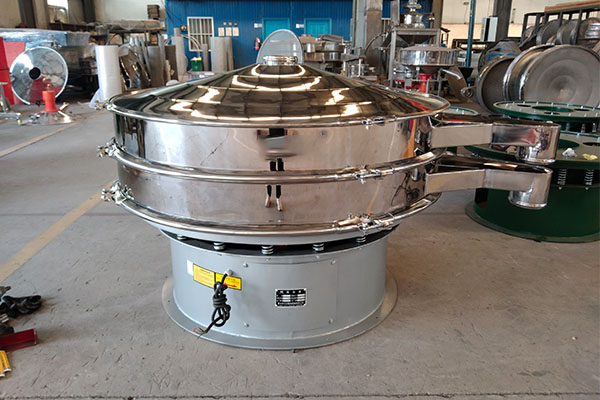 Solid Liquid Separation Equipment
Solid Liquid Separation Equipment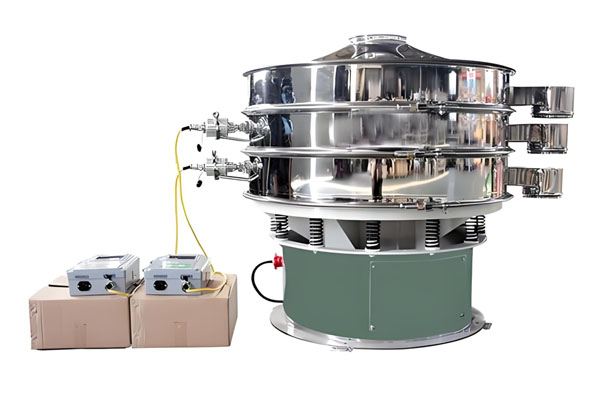 Ultrasonic Sieve
Ultrasonic Sieve